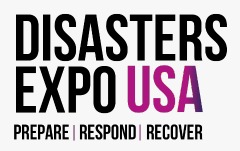Humans of NCEI: Chris Guiterman

Here at NCEI, we aren’t just data—we are people. In our Humans of NCEI series, meet the awesome minds that manage one of the largest archives of atmospheric, coastal, geophysical, and oceanic research in the world. Get to know Chris Guiterman, a Research Scientist from the Paleoclimate team.
What is your job title?
Research Scientist II.
What is your specific area of expertise?
I am a forest ecologist and dendrochronologist, which means I use tree rings to understand historical forest processes and how they’ve changed over time. I’ve also explored other applications of tree-rings, including reconstructing climate and assessing human wood use in archaeological sites. My favorite focus area is fire history. Trees that were wounded but not killed by fire allow us to date fire events to the year and often season. We can reconstruct area burned, fire-climate relationships, and human-triggered changes to forest processes.
What was your first job? How did it prepare you for your current position?
Right out of college, I worked as a forest technician in the Pacific Northwest with my wife. We did forest inventory work on private and federal lands, and every day was an adventure. Over the three years we did this work, I grew particularly interested in learning how to help forests face threats from Climate Change. This led me to pursue graduate degrees in forestry and forest ecology at the University of Maine and University of Arizona.
How did you end up at NCEI?
I joined NCEI’s World Data Service for Paleoclimatology in 2022 when I was hired by the Cooperative Institute for Research in Environmental Sciences (CIRES) at the University of Colorado-Boulder. Our “paleo team” manages global repositories of paleoenvironmental proxy data, including tree rings (lots of tree rings!), ice cores, ocean sediments, and several others.
What does a usual workday look like for you?
Having pursued my career largely because of my love of the outdoors and forest conservation, I spend a lot of time on my computer…But there’s a lot I like about that, from working closely with collaborators, programming software, to visualizing data. I spend a few days a month working on a microscope measuring and counting tree rings, and luckily, I get a few weeks every year in the mountains collecting more tree ring samples.
What question are you asked most often when someone finds out what you do? How do you respond?
Many folks I talk to are nervous about how forests are changing due to global warming and altered fire regimes. I tell them that several forests have been heavily impacted—some that have burned severely may never recover and have converted from forests to shrubs—but there are so several examples of forest resilience out there, especially where we have managed forests to resist major change. Forests are resilient. If we can prepare them for a warmer future by reducing fuels, the effects can be very good. If we can also reduce our carbon emissions, forests stand a good chance going forward.
What sort of training and education might one need for your job?
I pursued a PhD to develop a foundation for scientific inquiry and to empower me to do the research I am most interested in. I also learned and practiced a lot of field safety techniques to keep my crews and me happy and healthy while we are out on collection campaigns.
What projects are you working on now? Are there any upcoming projects that you are excited about?
I am working on a few projects, from analyzing the fire history of sites across North America to building new fire history sites in New Hampshire and Arizona. We just completed an exciting field campaign in Arizona to try to assess whether the state’s largest recorded wildfire, the 2011 Wallow Fire, was equally record-setting in a 200-300 year context.
What is your favorite aspect of your job?
The great people I work with at NOAA, The National Oceanic and Atmospheric Administration and other agencies, including the United States. Geological Survey (USGS), United States. Forest Service, and several academic departments. It’s especially great when I can be with these people at conferences or in the field.
Who are you outside of your career?
I am a father of three, always trying to get our kids outside for sports, hikes, and skiing. One of our family passions is making maple syrup in the springtime from trees around our home in New Hampshire.
Our team at Inergency is excited to announce our partnership with @Disasters Expo Europe, the leading event in disaster management.
Join us on the 15th &16th of May at the Messe Frankfurt to explore the latest solutions shaping disaster preparation, response and recovery.
To all our members, followers, and subscribers in the industry, This is YOUR opportunity to explore the intersection of sustainability and disaster management, connect with industry leaders, and stay at the forefront of emergency preparedness.
Don't miss out! Secure your complimentary tickets now and be part of the conversation driving innovation in disaster resilience. ➡️ https://lnkd.in/dNuzyQEh
And in case you missed it, here is our ultimate road trip playlist is the perfect mix of podcasts, and hidden gems that will keep you energized for the entire journey


